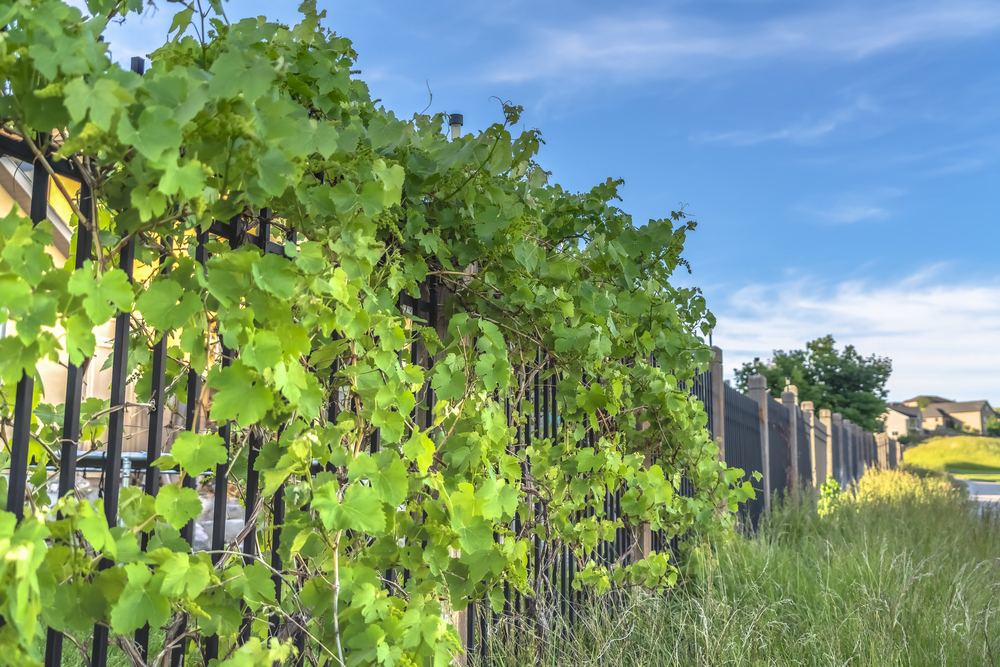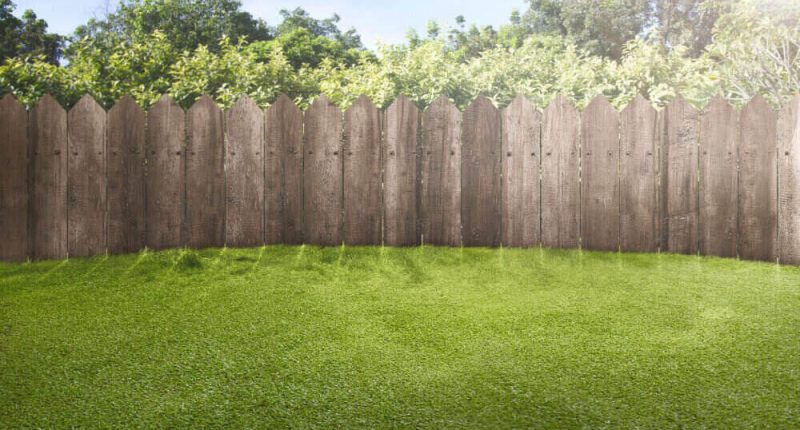All Categories
Featured
Fencings play a crucial duty in offering privacy, security, and enhancing the visual appeal of your residential property. Nonetheless, consistent exposure to the aspects can lead to damage. From hefty rainfall and snow to intense sun and wind, weather-related damage is just one of the most usual reasons for fence damage. While you can't control the weather condition, there are a number of means to secure your fence from the harmful results of weather condition and guarantee it lasts for several years to come.
Wood Fences: While wood fences are a classic choice, they are extremely susceptible to wetness and pests. To make a timber fencing a lot more durable, decide for pressure-treated lumber, cedar, or redwood.
Plastic Fences: Vinyl fences are extremely long lasting and require little upkeep. They are resistant to fading, cracking, and bending, making them optimal for areas that experience severe sunlight, rain, or chilly weather. Plastic additionally won't rot or bring in parasites, offering long-term protection without the requirement for continuous maintenance.
Metal Fencings: Wrought iron and light weight aluminum fences are superb options for their stamina and resistance to wind and wetness. They are at risk to rusting over time, especially if revealed to constant rainfall or humidity. Go with powder-coated or galvanized metal fencings to reduce the danger of corrosion.
![]()
Composite Fences: Integrating timber fibers and plastic, composite fencings are resistant to decomposing, fading, and insect damages. They provide the appearance of wood with much less upkeep, making them an optimal choice for areas with variable climate condition.
![]()
Wooden Fences: A good high quality timber sealant or discolor is necessary to secure your fence from the components. Be certain to reapply the layer every pair of years to keep your fence in leading condition.
Plastic Fences: While plastic is low-maintenance, you can still secure it better by using a UV protectant. These coatings help stop staining brought on by extended sunlight exposure. Furthermore, utilize vinyl-specific cleaners to maintain the surface area without discolorations or dirt build-up.
Steel Fencings: To protect steel fencings from rust and corrosion, think about applying a rust-inhibiting primer complied with by a safety paint made for outdoor usage. If feasible, powder finishing gives a long-lasting and sturdy surface that can withstand extreme weather condition.
Wooden Fencings: Tidy your wooden fencing with a stress washer or a soft cloth and light cleaning agent. Examine the fence regularly for indicators of rot, fractures, or insect invasions.
Plastic Fences: Plastic fences are very easy to tidy with soap and water. For harder discolorations, you can make use of a moderate bleach remedy or a vinyl cleaner to bring back the fence's appearance. Do not fail to remember to check for any type of cracks that may let water in, bring about additional damages.
Steel Fencings: Clean metal fencings with a soft cloth to remove dirt, dirt, and rust. If you discover rust places, eliminate them immediately with a wire brush and deal with the location with a rust-resistant primer or paint to avoid it from spreading out.
Wood Fences: When installing wooden fence articles, ensure they are set deeply right into the ground, ideally below the frost line to avoid shifting during freezing temperature levels. Use concrete to protect the posts and stop them from leaning or being rooted out by solid winds.
Steel Fences: For metal fencings, make certain that the articles are securely anchored in concrete. This is specifically important in regions with regular storms or hefty winds. You may likewise intend to mount added bracing to offer additional support against wind anxiety.
In addition, too much wetness from close-by plants can lead to mold and mildew and rot in wooden fences, so keep greenery at a secure distance to enable appropriate airflow and drainage.
Steel fencings ought to be evaluated for corrosion prior to the winter begins, and any affected locations should be treated with rust-resistant items. Additionally, applying a layer of paint or protective covering prior to the cold climate sets in can aid secure your fencing from ice and snow damage.
![]()
Final thought. Shielding your fence from weather-related damage calls for a mix of proper material option, regular upkeep, and proactive care. Whether you have a wooden, vinyl, metal, or composite fence, the appropriate protective procedures can extend its lifespan and keep its appearance. By adhering to these easy yet efficient actions, you can safeguard your fence versus the aspects and keep it looking fantastic for many years to come.
- Pick Weather-Resistant Materials. Among the most effective means to protect your fencing is by selecting the ideal material for your environment. Certain materials are more sturdy and better fit to hold up against certain weather.
Wood Fences: While wood fences are a classic choice, they are extremely susceptible to wetness and pests. To make a timber fencing a lot more durable, decide for pressure-treated lumber, cedar, or redwood.
Plastic Fences: Vinyl fences are extremely long lasting and require little upkeep. They are resistant to fading, cracking, and bending, making them optimal for areas that experience severe sunlight, rain, or chilly weather. Plastic additionally won't rot or bring in parasites, offering long-term protection without the requirement for continuous maintenance.
Metal Fencings: Wrought iron and light weight aluminum fences are superb options for their stamina and resistance to wind and wetness. They are at risk to rusting over time, especially if revealed to constant rainfall or humidity. Go with powder-coated or galvanized metal fencings to reduce the danger of corrosion.

Composite Fences: Integrating timber fibers and plastic, composite fencings are resistant to decomposing, fading, and insect damages. They provide the appearance of wood with much less upkeep, making them an optimal choice for areas with variable climate condition.
- Apply Safety Coatings. No matter of the product, using safety finishes is vital in extending the life of your fence. Coatings create a barrier that guards your fencing from wetness, UV rays, and other ecological stressors.

Wooden Fences: A good high quality timber sealant or discolor is necessary to secure your fence from the components. Be certain to reapply the layer every pair of years to keep your fence in leading condition.
Plastic Fences: While plastic is low-maintenance, you can still secure it better by using a UV protectant. These coatings help stop staining brought on by extended sunlight exposure. Furthermore, utilize vinyl-specific cleaners to maintain the surface area without discolorations or dirt build-up.
Steel Fencings: To protect steel fencings from rust and corrosion, think about applying a rust-inhibiting primer complied with by a safety paint made for outdoor usage. If feasible, powder finishing gives a long-lasting and sturdy surface that can withstand extreme weather condition.
- Routine Cleansing and Examinations. Appropriate cleansing and regular examinations are vital to maintaining the honesty of your fence. Build-up of debris, mold and mildew, and dust can catch wetness against your fence and trigger long-term damage.
Wooden Fencings: Tidy your wooden fencing with a stress washer or a soft cloth and light cleaning agent. Examine the fence regularly for indicators of rot, fractures, or insect invasions.
Plastic Fences: Plastic fences are very easy to tidy with soap and water. For harder discolorations, you can make use of a moderate bleach remedy or a vinyl cleaner to bring back the fence's appearance. Do not fail to remember to check for any type of cracks that may let water in, bring about additional damages.
Steel Fencings: Clean metal fencings with a soft cloth to remove dirt, dirt, and rust. If you discover rust places, eliminate them immediately with a wire brush and deal with the location with a rust-resistant primer or paint to avoid it from spreading out.
- Strengthen Your Fencing with Correct Installment. Correct setup is one of the most effective means to stop weather-related damage. A fence that is improperly set up is most likely to collapse or experience damages during tornados.
Wood Fences: When installing wooden fence articles, ensure they are set deeply right into the ground, ideally below the frost line to avoid shifting during freezing temperature levels. Use concrete to protect the posts and stop them from leaning or being rooted out by solid winds.
Steel Fences: For metal fencings, make certain that the articles are securely anchored in concrete. This is specifically important in regions with regular storms or hefty winds. You may likewise intend to mount added bracing to offer additional support against wind anxiety.
- Trim Trees and Shrubs Near Your Fence. Disordered trees and hedges can create substantial damages to your fencing, particularly throughout high winds or hefty tornados. Tree branches can scratch versus the fence, causing scratches, and their roots can undercut the blog posts. Keep plants trimmed and make certain that tree branches are not leaning on or near the fencing.
In addition, too much wetness from close-by plants can lead to mold and mildew and rot in wooden fences, so keep greenery at a secure distance to enable appropriate airflow and drainage.
- Winterize Your Fence. Take extra preventative measures to safeguard your fencing from freezing temperature levels, snow, and ice if you live in a location with rough winter seasons. For wood fences, make sure the base of the articles is raised over ground degree to avoid water build-up, which can freeze and break the timber. Consider making use of a dampness obstacle around the base of the posts to maintain them completely dry during the wintertime months.
Steel fencings ought to be evaluated for corrosion prior to the winter begins, and any affected locations should be treated with rust-resistant items. Additionally, applying a layer of paint or protective covering prior to the cold climate sets in can aid secure your fencing from ice and snow damage.
- Post-Storm Fixes. Storms can create prompt damage to your fencing, including dropped branches, broken messages, or dislodged panels. If your fence has been drastically damaged, it's a good concept to seek advice from a specialist for repair work to guarantee it remains structurally sound.

Final thought. Shielding your fence from weather-related damage calls for a mix of proper material option, regular upkeep, and proactive care. Whether you have a wooden, vinyl, metal, or composite fence, the appropriate protective procedures can extend its lifespan and keep its appearance. By adhering to these easy yet efficient actions, you can safeguard your fence versus the aspects and keep it looking fantastic for many years to come.
Latest Posts
Discover Leading Car Repair Services at Montclare Auto Repair – Quality Service Today
Published May 29, 25
1 min read
Specialist Industrial Roofing Solutions in North Platte, Nebraska
Published May 26, 25
2 min read
Trustworthy Industrial Roofing Providers by Weathercraft
Published May 23, 25
2 min read
More
Latest Posts
Discover Leading Car Repair Services at Montclare Auto Repair – Quality Service Today
Published May 29, 25
1 min read
Specialist Industrial Roofing Solutions in North Platte, Nebraska
Published May 26, 25
2 min read
Trustworthy Industrial Roofing Providers by Weathercraft
Published May 23, 25
2 min read